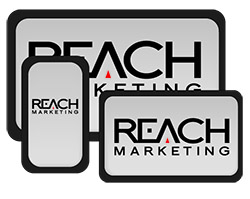 Within the past year, mobile devices quietly passed a crucial milestone: They are now the most-used means for people to check their email, surpassing home and office computer use. For email marketing, that’s huge news, and it means a dramatic shift in how you think about email composition. Email must now be readable on any device, including smartphones, tablets and big desktop machines. To ignore half your customers by making emails that are cumbersome or impossible to read on smaller screens is tantamount to throwing away leads. At the same time, designing only for the smallest screens can be limiting for email creative. The solution is responsive email design.
Within the past year, mobile devices quietly passed a crucial milestone: They are now the most-used means for people to check their email, surpassing home and office computer use. For email marketing, that’s huge news, and it means a dramatic shift in how you think about email composition. Email must now be readable on any device, including smartphones, tablets and big desktop machines. To ignore half your customers by making emails that are cumbersome or impossible to read on smaller screens is tantamount to throwing away leads. At the same time, designing only for the smallest screens can be limiting for email creative. The solution is responsive email design.
What Is Responsive Design?
The average worker gets more than a hundred emails a day and checks those messages on more than one device. Email messages that don’t display properly or are unreadable will not only get skipped, they may be seen as spam, leading to higher unsubscribe rates. Responsive design treats the elements on a website or email as fluid, modular components that rearrange and resize themselves to suit the screen on which they’re displayed. Your information automatically customizes itself to the recipient’s device and specifications.
For example, an email newsletter on a full-sized desktop screen might display with a larger title image and feature information in multiple side-by-side windows. Using responsive email design, the same newsletter appears on a smartphone screen with a much smaller header image, text displayed in columnar form for easy scrolling and small images at the bottom of the page. Mobile versions of a responsive email pare away visual clutter and ensure that recipients can read and see all the necessary information.
Responsive Design Matters More than You Think
It’s a little misleading to look at statistics on mobile open rates alone because many emails are opened more than once, often on different devices. Let’s say your initial email blast goes out to construction professionals. If they’re on a work site, they typically check their mail on a mobile device, but they aren’t likely to invest the time to click through or take action on what they read; they save the email for later and open it again when they return to the office.
What happens, though, if that initial email is unreadable or only shows part of an image? It’s possible your recipient will mark it for later perusal, but because the email has lost that initial opportunity to make an impression, it isn’t likely. If email isn’t readable, the vast majority of recipients won’t work to make it readable. Responsive email piques these prospects’ interest on first sight while the more detailed, expansive view they see later convinces them to click.
Check, Please
How often do you look at your phone? How about your email; do you check it often? If you’re like most people, you check your email an average of 10 times a day, but you look at your phone a whopping 150 times a day. It’s a short step from looking at your phone to interacting with it, and with the rise of email access via mobile devices, the number of times people check their email is also rising. Making email compelling to open, read and click with responsive design ensures higher open rates no matter where your prospects check their email.
Frequent phone checks also work to your advantage because people don’t just check during the work day. With the sheer volume of mail most people get, mailing at a less common time can help cut through the chatter and make a bigger impact. Your email marketing team can set up A/B testing and help you find the best time to send email, but make sure everything you send can mold itself to the user’s device.
Don’t let readability become a roadblock for your open rates. Responsive email design, like responsive website construction, is a courtesy your prospects will repay with higher open rates and click-throughs.
Contact our email marketing experts today at 855.867.3224 to help you devise your next email campaign strategy.
© Reach Marketing LLC 2014 All Rights Reserved.



